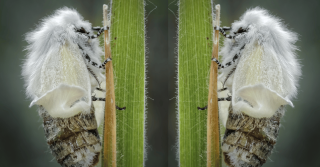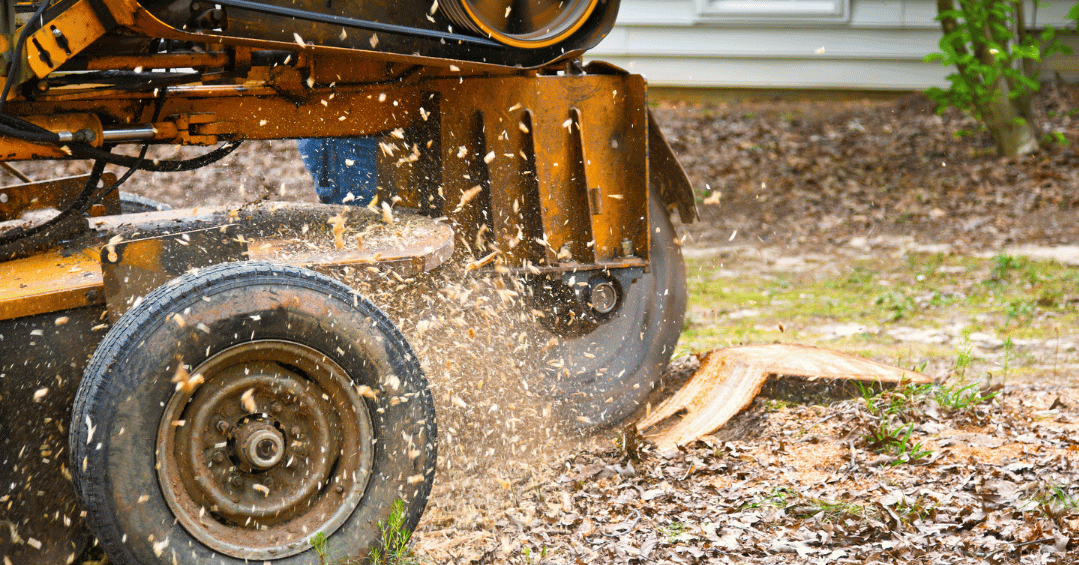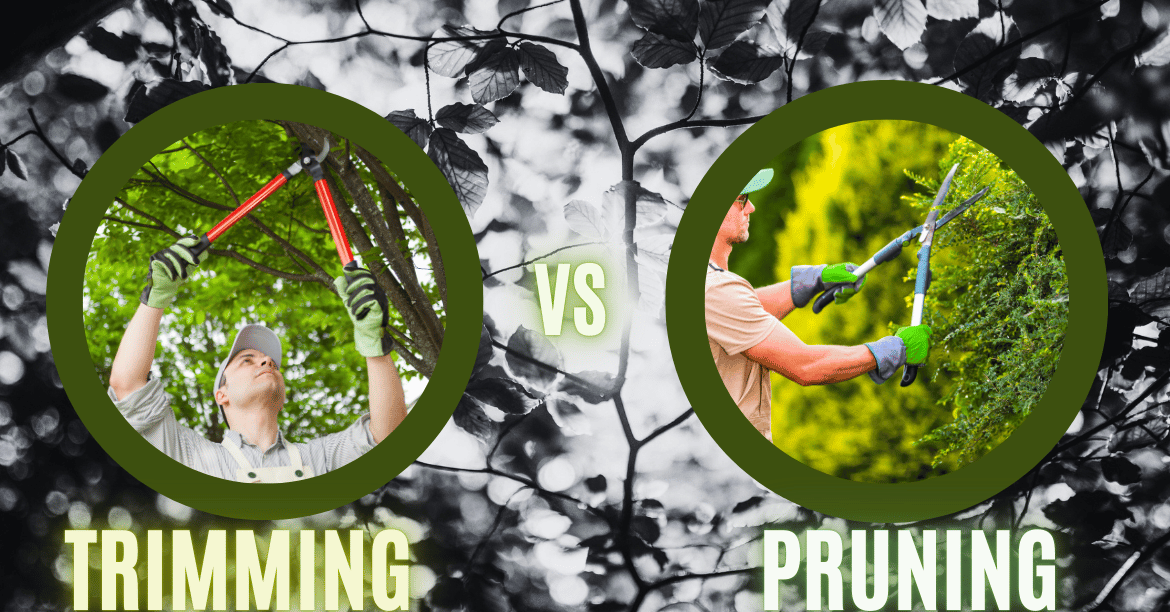The white satin moth, scientifically known as Leucoma salicis, is a striking insect that belongs to the Erebidae family. Characterized by its pure white wings and body, this moth is a significant concern for forestry and urban landscapes due to its destructive feeding habits.
Things to Know About White Satin Moths
Size
Adult white satin moths have a wingspan ranging from 1.6 to 2.4 inches (4 to 6 cm). Their bodies and wings are covered in a silky white scale, making them easily identifiable against the green foliage they infest.
The larvae of the white satin moth can grow up to 2 inches (5 cm) long. They are characterized by black bodies adorned with white spots and yellow-orange stripes running along their sides.
Eggs
The eggs of the Leucoma salicis are laid in clusters on the bark of trees or the underside of leaves. They are tiny, round, and initially creamy white but turn darker as they mature. Each female can lay up to 200 eggs, which hatch into voracious larvae.
The eggs undergo a diapause stage during the winter, which means they remain dormant until the conditions are favorable for hatching, typically in the spring. This timing allows the larvae to feed on the fresh foliage that emerges during the early growing season.
White Satin Moth Life Cycle
The white satin moth typically has one generation per year. The larvae feed from spring through early summer, and the adults appear from mid-summer to early fall, ensuring a continuous cycle of damage if left unchecked. The life cycle of the white satin moth includes four stages: egg, larva, pupa, and adult.
- Egg Stage: Eggs are laid in late summer and remain dormant through winter.
- Larval Stage: Larvae emerge in the spring and begin feeding immediately on the leaves of host trees.
- Pupal Stage: After several weeks of feeding, the larvae pupate in silken cocoons, usually attached to the bark or leaves.
- Adult Stage: Adults emerge in mid to late summer, mate, and the females lay eggs, completing the cycle.
Leucoma Salicis Predators
Birds, parasitoid wasps, and ground beetles are natural predators of Leucoma slices. These predators are crucial in controlling moth populations in their native habitats.
In its native range, predators keep the white satin moth populations in check. However, in regions where they are invasive, the absence of these natural predators can lead to significant infestations and damage to local flora.
Are White Satin Moths Invasive?
The white satin moth is considered invasive in many parts of North America. Initially from Europe and Asia, it was first detected in North America in the early 1920s. Since then, it has spread across the continent, causing extensive damage to willow, poplar, and cottonwood trees.
Threat to Forest Health
Due to their feeding habits, white satin moths pose a severe threat to forest health. The larvae can defoliate trees, weakening them and making them more susceptible to other pests and diseases. Repeated defoliation can lead to tree mortality, impacting forest ecosystems and reducing biodiversity.
How to Manage White Satin Moths
Effective management of white satin moths involves a combination of monitoring, cultural practices, biological control, and, if necessary, chemical treatments.
Monitoring
Regular monitoring is essential to detect early signs of infestation. Look for egg masses on tree bark and leaves and check for larvae in the spring. Pheromone traps can also be used to monitor adult moth populations.
Cultural Practices
Promote tree health by ensuring proper watering, mulching, and pruning. Healthy trees are better able to withstand pest infestations. Removing and destroying infested leaves and branches can reduce the number of larvae and prevent the spread of the moths.
Biological Control
Encourage the presence of natural predators such as birds and beneficial insects. Introducing parasitoid wasps that target moth eggs and larvae can also help control populations.
Chemical Control
Chemical treatments may be necessary for severe infestations. Insecticides should be used judiciously and according to label instructions to minimize environmental impact. Timing is critical; treatments are most effective when larvae are young and actively feeding.
Integrated Pest Management (IPM)
Implementing an Integrated Pest Management (IPM) approach combines these strategies to effectively manage white satin moth populations. IPM focuses on long-term prevention and uses biological, cultural, and chemical methods to keep pest numbers at acceptable levels.
Contact Strobert Tree Services
Managing white satin moths requires expertise and dedication. At Strobert Tree Services, we specialize in expert tree care across Delaware, Pennsylvania, and New Jersey. Our team is equipped to handle all aspects of tree maintenance, from monitoring and pruning to implementing effective pest management strategies.
Contact us today if you're facing a white satin moth infestation or need professional tree care. Let us help you protect and maintain the health and beauty of your trees.











